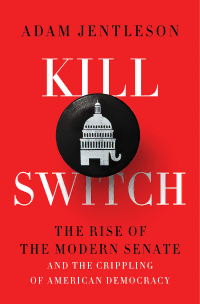Table Of ContentCover Page: iii
Title Page: iii
Contents Page: ix
Introduction: The Little Harm Thesis Page: 1
Part I: Rise of the Filibuster Page: 15
Chapter One: Birth of a Notion Page: 17
Chapter Two: “Victorious in the Midst of Unbroken Defeats” Page: 42
Chapter Three: Dawn of the Supermajority Page: 64
Chapter Four: An Idea Whose Time Has Come Page: 85
Part II: Tyranny of the Minority Page: 109
Chapter Five: The Superminority Page: 111
Chapter Six: Outside In Page: 134
Chapter Seven: Means of Control Page: 154
Chapter Eight: What It Takes Page: 181
Chapter Nine: The Uniter Page: 204
Conclusion: How to Save the Senate Page: 239
Acknowledgments Page: 255
Notes Page: 261
Index Page: 301
Additional Praise for Kill Switch Page: i
Copyright Page: iv
Description:With a new epilogue on filibuster battles under the Biden administration THE CASE FOR ENDING THE FILIBUSTER "A truly excellent book… blistering and persuasive.” —Ezra Klein, New York Times An insider’s account of how politicians representing a radical white minority of Americans have used “the world’s greatest deliberative body” to hijack our democracy. Our democracy is under assault from homegrown authoritarians, with most observers blaming Donald Trump and the Republican Party that submitted to him. Yet as Adam Jentleson shows, the problem not only goes back to the nineteenth century, but is less about the presidency than it is about our nation’s most venerated institution: the United States Senate. A revelatory history of minority rule in America as expressed through the Senate filibuster, Kill Switch shows that white conservatives have long relied on the filibuster—which is not featured in the Constitution, and which, as Jentleson demonstrates, the Framers would have opposed—to shut down attempts to create a multiracial democracy. Featuring a new epilogue on filibuster battles under the Biden administration, Kill Switch will remain an essential warning about the costs of empowering this nation’s right-wing minority. • “Jentleson understands the inner workings of the institution, down to the most granular details, showing precisely how arcane procedural rules can be leveraged to dramatic effect.” —Jennifer Szalai, New York Times • “Careful and thorough and exacting.” —Michael Tomasky, New York Review of Books • “[An] excellent, surprising new book.” —Benjamin Wallace-Wells, The New Yorker

